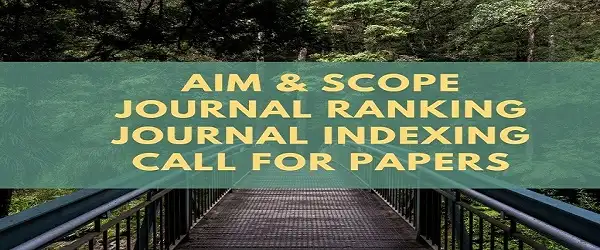Environmental Challenges impact factor, indexing, ranking (2024)

Aim and Scope
The Environmental Challenges is a research journal that publishes research related to Environmental Science. This journal is published by the Elsevier BV. The ISSN of this journal is 26670100. Based on the Scopus data, the SCImago Journal Rank (SJR) of environmental challenges is 0.749.
Also, please check the following important details about environmental challenges: Publisher, ISSN, Ranking, Indexing, Impact Factor (if applicable), Publication fee (APC), Review Time, and Acceptance Rate.
According to Clarivate's JCR, journals indexed in SCIE/SSCI have an impact factor.
Environmental Challenges Ranking
The SJR (SCImago Journal Rank) measures citations weighted by prestige. It is useful for comparing journals within the same field, and forms the basis of the subject category ranking. A journal SJR indicator is a numeric value representing the average number of weighted citations received during a selected year per document published in that journal during the previous three years, as indexed by Scopus. Higher SJR indicator values are meant to indicate greater journal prestige. SJR is developed by the Scimago Lab, originated from a research group at University of Granada. Q1 journals are cited more often and by more prestigious journals than those in the other quartiles.
Each subject category of journals is divided into four quartiles: Q1, Q2, Q3, Q4. Q1 is occupied by the top 25% of journals in the list; Q2 is occupied by journals in the 25 to 50% group; Q3 is occupied by journals in the 50 to 75% group and Q4 is occupied by journals in the 75 to 100% group.
CiteScore of an academic journal is a measure reflecting the yearly average number of citations to recent articles published in that journal. This journal evaluation metric was launched in December 2016 by Elsevier as an alternative to the generally used JCR impact factors (calculated by Clarivate). CiteScore is based on the citations recorded in the Scopus database rather than in JCR, and those citations are collected for articles published in the preceding four years instead of two or five.
Source Normalized Impact per Paper (SNIP) is calculated annually from Scopus data. It is a sophisticated metric that intrinsically accounts for field-specific differences in citation practices.
Important Metrics
| Journal Title: | Environmental Challenges |
| Publisher: | Elsevier BV |
| ISSN: | 26670100 |
| Type: | journal |
| Journal Scope: | Environmental Science |
| Country: | Netherlands |
| H-Index: | 19 |
| SJR: | 0.749 |
| Quartile: | Environmental Engineering (Q2); Global and Planetary Change (Q2); Management, Monitoring, Policy and Law (Q2); Pollution (Q2); Waste Management and Disposal (Q2) |
environmental challenges Indexing
The environmental challenges is indexed in:
An indexed journal means that the journal has gone through and passed a review process of certain requirements done by a journal indexer.
The Web of Science Core Collection includes the Science Citation Index Expanded (SCIE), Social Sciences Citation Index (SSCI), Arts & Humanities Citation Index (AHCI), and Emerging Sources Citation Index (ESCI).
Environmental Challenges Quartile
The latest Quartile of environmental challenges is Q2.
Each subject category of journals is divided into four quartiles: Q1, Q2, Q3, Q4. Q1 is occupied by the top 25% of journals in the list; Q2 is occupied by journals in the 25 to 50% group; Q3 is occupied by journals in the 50 to 75% group and Q4 is occupied by journals in the 75 to 100% group.
Publication fee
According to journal website, the publication fee of environmental challenges is around 1800 USD.
The environmental challenges has also Journal waiver policy (for developing countries, authors etc).
An article processing charge (APC), also known as a publication fee, is a fee which is sometimes charged to authors. Most commonly, it is involved in making a work available as open access (OA), in either a full OA journal or in a hybrid journal.
Call for Papers
Visit to the official website of the journal/ conference to check the details about call for papers.
How to publish in Environmental Challenges?
If your research is related to Environmental Science, then visit the official website of environmental challenges and send your manuscript.
Tips for publishing in Environmental Challenges:
- Selection of research problem.
- Presenting a solution.
- Designing the paper.
- Make your manuscript publication worthy.
- Write an effective results section.
- Mind your references.
Acceptance Rate
Acceptance rate is the ratio of the number of articles submitted to the number of articles published. Researchers can check the acceptance rate on the journal website. Alternatively, they can contact the editor of the journal.Journal Publication Time
The Journal Publication Time means the average number of weeks between article submission and publication. According to the journal website, the environmental challenges publishes research articles in 8 weeks on an average.
Final Summary
- It is published by Elsevier BV.
- The journal is indexed in UGC CARE, Scopus, DOAJ.
- It is an open access journal.
- The (SJR) SCImago Journal Rank is 0.749.
- The publication time (Average number of weeks between article submission and publication) of the journal is 8 weeks.
- The Publication fee (APC) environmental challenges 1800 USD.
Sources: https://www.journals.elsevier.com/environmental-challenges/
SIMILIAR JOURNALS
ISSN: 2666-7894
Publisher: ELSEVIER
ISSN: 2590-0617
Publisher: ELSEVIER
ENVIRONMENTAL GEOCHEMISTRY AND HEALTH
ISSN: 0269-4042Publisher: SPRINGER
CLEANER AND RESPONSIBLE CONSUMPTION
ISSN: 2666-7843Publisher: ELSEVIER
CLEANER ENGINEERING AND TECHNOLOGY
ISSN: 2666-7908Publisher: ELSEVIER
ISSN:
Publisher: MDPI
ISSN:
Publisher: SPRINGERNATURE
ENVIRONMENTAL QUALITY MANAGEMENT
ISSN: 1088-1913Publisher: WILEY
ENVIRONMENTAL RESEARCH: INFRASTRUCTURE AND SUSTAINABILITY
ISSN:Publisher: IOP PUBLISHING LTD
FRONTIERS IN SUSTAINABLE CITIES
ISSN:Publisher: FRONTIERS MEDIA SA
TOP RESEARCH JOURNALS
- Agricultural & Biological Sciences
- Arts & Humanities
- Business, Management and Accounting
- Chemistry
- Computer Science
- Education
- Engineering
- Mathematics
- Medicine
- Physics
- Social Sciences